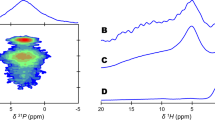Abstract
A mathematical analysis of autoradiographic data for the uptake and release of45Ca at bone surfaces in rabbit, dog, and man showed that a diffusion model of bone surface is not tenable. Datain vivo are, instead, well represented by a single surface compartment. Thein vitro data, on the other hand, can be represented by a series of three compartments; the middle one of these compartment is identical with the surface compartment of thein vivo situation. The residence time of calcium in this compartment can be related to the binding energy of a calcium ion at a surface site on an apatite crystal. It is concluded that the environment of the apatite crystals 1–4 μ below bone surfaces is similar to that in aqueous solution, making them available for rapid exchange of calcium but that this availability is so drastically reduced within the volume of bone that the percolation model of Arnoldet al. is untenable.
Résumé
Une analyse mathématique de résultats autoradiographiques de l'absorption et de l'élimination du45Ca à la surface des os de lapin, de chien et de l'homme montre qu'un modèle de diffusion à la surface osseuse n'est pas valable. Les résultatsin vivo, par contre, sont compatibles avec un compartiment superficiel unique. Les résultatsin vitro peuvent être représentés, d'un autre côté, par une série de trois compartiments: celiu du milieu est identique avec le compartiment superficiel de la situationin vivo. Le temps de séjour du calcium dans ce compartiment peut être mis en rapport avec l'énergie de liaison de l'ion clacium, au niveau du côté superficiel d'un cristal d'apatite. Il semble que l'environnement des cristaux d'apatite, 1–4 μ sous la surface osseuse, soit identique à celui d'une solution aqueuse, les rendant susceptibles d'un échange rapide de calcium, mais cette possibilité est tellement réduite dans le volume osseux que le modèle de percolation proposé par Arnold et coll, parait indéfendable.
Zusammenfassung
Eine mathematische Analyse von autoradiographischen Daten betreffend Aufnahme und Abgabe von45Ca an Knochenoberflächen beim Kaninchen, beim Hund und beim Menschen zeigte, daß ein Diffusionsmodell die Knochenoberfläche nicht überzeugend beschreibt. Hingegen werdenin vivo-Daten durch ein einziges Oberflächenkompartiment gut erfaßt. Diein vitro. Daten können andererseits durch eine Serie von drei Kompartimenten dargestellt werden; das mittlere dieser Kompartimente ist identisch mit dem Oberflächenkompartiment der Versuchein vivo. Die Verweildauer des Calciums in diesem Kompartiment kann zur Bindungsenergie eines Calciumions an der Oberfläche eines Apatitkristalls in Beziehung gebracht werden. Es wird daraus abgeleitet, daß die Umgebung der Apatitkristalle, die 1–4 μ unter der Knochenoberfläche liegen, derjenigen in wässeriger Lösung gleicht und sie dadurch für einen raschen Calciumaustausch zugänglich macht, da\ jedoch diese Zugänglichkeit innerhalb des Knochenvolumens derart drastisch reduziert wird, daß das Perkolationsmodell von Arnoldet al. nicht brauchbar ist.
Similar content being viewed by others
References
Arnold, J. S., Frost, H. M., Buss, R. O.: The osteocyte as a bone pump. Clin. Orthop.78, 47–55 (1971).
Carslaw, H. S., Jaeger, J. C.: Conduction of heat in solids, 2nd ed., p. 63. Oxford: Clarendon Press 1959.
Dallemagne, M. J., Richelle, L.: Radioisotopes and bone, p. 241. Oxford: Blackwell Scientific Publications 1962.
De Boer, J. H.: Atomic forces and adsorption. Advanc. Coll. Science3, 1–67 (1950).
Frenkel, J.: Theorie der Adsorption und verwandter Erscheinungen. Z. Phys.26, 117–138 (1924) and Statistische Physik, 2te Aufl., S. 357. Berlin: Akademie Verlag 1957.
Gantmacher, F. R.: Matrizenrechnung I, S. 108. Berlin: VEB Deutscher Verlag d. Wissenschaften 1958.
Lloyd, E., Hodges, D.: Quantitative characterization of bone: A computer analysis of microradiographs. Clin. Orthop.78, 230–250 (1971).
Marshall, J. H., Rowland, R. E., Jowsey, J.: Microscopic metabolism of calcium in bone. II. Quantitative autoradiography. Radiat. Res.10, 213–233 (1959).
Marshall, J. H., Onkelinx, C.: Radial diffusion and power function retention of alkaline earth radioisotopes in adult bone. Nature (Lond.)217, 742–743 (1968).
Marshall, J. H., Rundo, J., Liniecki, J., Marotti, G., Mays, C. W., Sissons, H. A., Snyder, W. S.: Alkaline earth metabolism in adult man. Health Physics (in press).
Neuman, W. F., Terepka, A. R., Canas, F.: The cycling concept of exchange in bone. Calcif. Tiss. Res.2, 262–270 (1968).
Pak, Ch. Y. C., Bartter, F. C.: Ionic interaction with bone Mineral. I. Evidence for an Isoionic calcium exchange with hydroxyapatite. Biochim. Biophys. Acta141, 401–409 (1967).
Pak, Ch. Y. C., Bartter, F. C.: Ionic interaction with bone mineral. III. Reversible calcium exchange with bone powder. Proc. Soc. exp. Biol. (N. Y.)126, 126–130 (1967).
Riggs, B. L., Marshall, J. H., Jowsey, J., Heaney, R. P., Bassingthwaighte, J. B.: Quantitative45Ca autoradiography of human bone. J. Lab. clin. Med.78, 585–598 (1971).
Rowland, R. E.: Exchangeable bone calcium. Clin. Orthop.49, 233–248 (1966).
Spector, W. S.: Handbook of biological data, p. 279. Philadelphia: W. B. Saunders Co., 1956.
Author information
Authors and Affiliations
Additional information
Work performed under the auspices of the U. S. Atomic Energy Commission.
Rights and permissions
About this article
Cite this article
Groer, P.G., Marshall, J.H. Mechanism of calcium exchange at bone surfaces. Calc. Tis Res. 12, 175–192 (1973). https://doi.org/10.1007/BF02013733
Received:
Accepted:
Issue Date:
DOI: https://doi.org/10.1007/BF02013733




